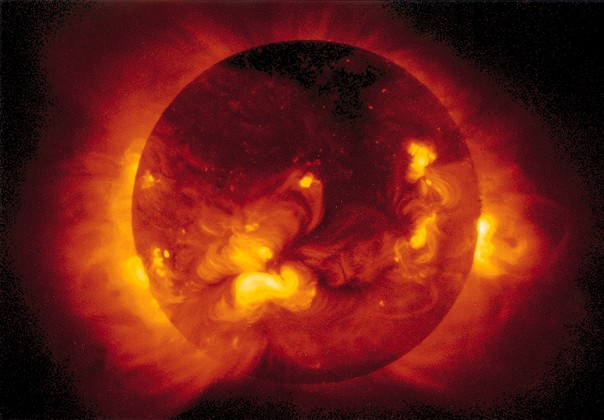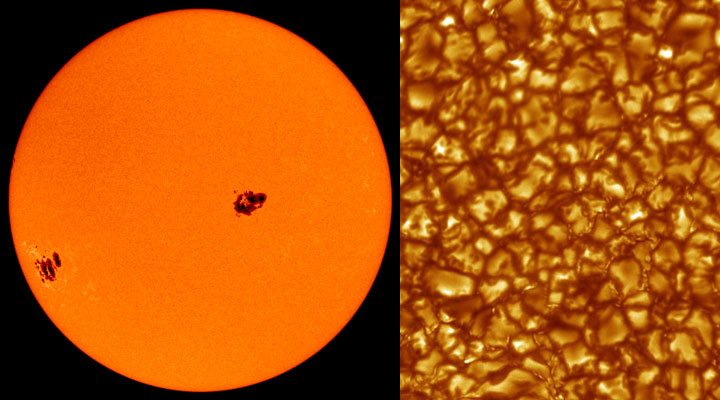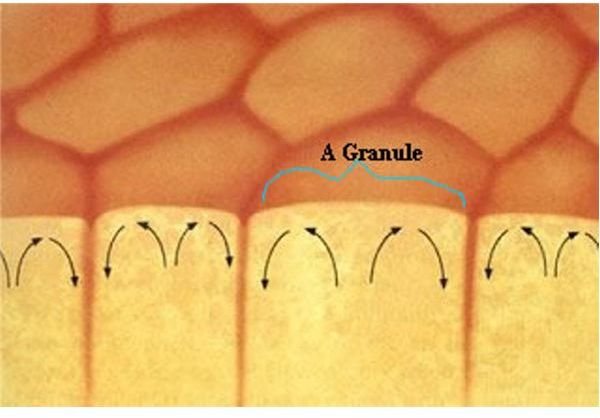

A pair or group of sunspots appear from inside the sun, and can remain visible for weeks before disappearing back into the solar interior. But detailed scrutiny shows that it is often pitted with dark spots, called sunspots. To most of us, the sun looks like a perfect, white-hot globe, round, smooth and without a blemish. Photo: Courtesy NASA Ask The Professor What are sunspots, and do they affect the Earth's weather? This month’s expert, Kenneth R.

The dark specks are sunspots, which are cooler than the surface of the sun. Textbook content produced by OpenStax is licensed under a Creative Commons Attribution License. We recommend using aĪuthors: Andrew Fraknoi, David Morrison, Sidney C. Use the information below to generate a citation. Then you must include on every digital page view the following attribution: If you are redistributing all or part of this book in a digital format, Then you must include on every physical page the following attribution:


If you are redistributing all or part of this book in a print format, Want to cite, share, or modify this book? This book uses the Active region an area on the Sun where magnetic fields are concentrated sunspots, prominences, flares, and CMEs all tend to occur in active regions aurora light radiated by atoms and ions in the ionosphere excited by charged particles from the Sun, mostly seen in the magnetic polar regions chromosphere the part of the solar atmosphere that lies immediately above the photospheric layers corona (of the Sun) the outer (hot) atmosphere of the Sun coronal hole a region in the Sun’s outer atmosphere that appears darker because there is less hot gas there coronal mass ejection (CME) a solar flare in which immense quantities of coronal material-mainly protons and electrons-is ejected at high speeds (500–1000 kilometers per second) into interplanetary space differential rotation the phenomenon that occurs when different parts of a rotating object rotate at different rates at different latitudes granulation the rice-grain-like structure of the solar photosphere granulation is produced by upwelling currents of gas that are slightly hotter, and therefore brighter, than the surrounding regions, which are flowing downward into the Sun Maunder Minimum a period during the seventeenth century when the number of sunspots seen throughout the solar cycle was unusually low photosphere the region of the solar (or stellar) atmosphere from which continuous radiation escapes into space plage a bright region of the solar surface observed in the light of some spectral line plasma a hot ionized gas prominence a large, bright, gaseous feature that appears above the surface of the Sun and extends into the corona solar flare a sudden and temporary outburst of electromagnetic radiation from an extended region of the Sun’s surface solar wind a flow of hot, charged particles leaving the Sun sunspot large, dark features seen on the surface of the Sun caused by increased magnetic activity sunspot cycle the semiregular 11-year period with which the frequency of sunspots fluctuates transition region the region in the Sun’s atmosphere where the temperature rises very rapidly from the relatively low temperatures that characterize the chromosphere to the high temperatures of the corona


 0 kommentar(er)
0 kommentar(er)
